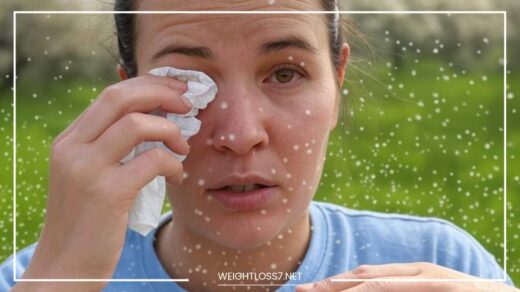Hydrotherapy 101: Techniques & Benefits for Wellness

Hydrotherapy
Dive into Wellness: Exploring the World of Hydrotherapy
Water. It’s the essence of life, carving landscapes, quenching thirst, and holding the potential for profound healing. Hydrotherapy, the use of water for therapeutic purposes, has been a cornerstone of wellness practices for millennia.
From the ancient Egyptians seeking solace in the Nile to modern-day hot tubs bubbling with relaxation, water’s power to soothe and restore has transcended time.
This comprehensive guide delves into the fascinating world of hydrotherapy, unveiling its benefits, exploring a wider range of techniques, and providing practical tips on incorporating it into your personal wellness journey.
The Science Behind the Soak: Unveiling the Mechanisms of Hydrotherapy
Hydrotherapy’s effectiveness lies in harnessing the unique physical properties of water. Here’s a deeper look at some key mechanisms at play:
- Buoyancy: Imagine the weightlessness experienced by astronauts. Water offers a similar effect, reducing the force of gravity on your body. This makes movement significantly easier, minimizing stress on joints. This is a game-changer for individuals recovering from injuries, managing chronic pain, or with limited mobility.
- Hydrostatic Pressure: As you descend deeper into water, the pressure exerted on your body increases. This pressure can be a powerful tool for improving circulation, reducing swelling, and promoting a sense of deep relaxation.
- Temperature: Water temperature plays a crucial role in therapeutic effects. Warm water relaxes muscles, eases pain, and soothes stiffness. Conversely, cold water invigorates, reduces inflammation, and can numb discomfort. Therapists strategically leverage temperature variations to achieve desired outcomes.
- Resistance: Moving through water creates resistance, leading to a low-impact workout. This gentle resistance strengthens muscles, improves cardiovascular health, and offers a safe exercise option for those with joint limitations.
A Hydrotherapy Smorgasbord: Unveiling a Spectrum of Techniques
The beauty of hydrotherapy lies in its diverse menu of techniques, each catering to specific needs:
- Whirlpool Baths: Imagine a personal underwater massage parlor. Whirlpool baths use jets of pressurized water to target specific areas, promoting relaxation, pain relief, and improved circulation. These are ideal for athletes recovering from muscle strain or individuals with chronic pain conditions.
- Sitz Baths: Designed for a more targeted approach, sitz baths focus on soaking the hips and buttocks. Filled with warm or cool water, they can address various conditions like hemorrhoids, pain, and menstrual cramps. Herbal infusions can be added for enhanced therapeutic benefits.
- Saunas and Steam Rooms: Step into a world of intense heat and humidity. Saunas utilize dry heat, while steam rooms offer a more moist environment. Both promote sweating, which can help detoxify the body, relieve muscle tension, improve circulation, and ease respiratory congestion.
Pro Tip: Enhance your sauna or steam room experience by incorporating aromatherapy. Eucalyptus oil can help clear congestion, while lavender oil promotes relaxation.
- Contrast Showers: Embrace the invigorating power of temperature variations. Contrast showers involve alternating between hot and cold water. This stimulates the circulatory system, boosting energy levels, potentially reducing muscle soreness, and aiding in post-workout recovery.
- Colon Hydrotherapy (Colonic Irrigation): This technique involves flushing the colon with water to remove waste products. While some proponents tout its detoxifying benefits, the medical community has mixed opinions on its effectiveness and safety. It’s crucial to consult with a doctor before considering colon hydrotherapy.
Beyond the Spa: Even your everyday shower or bath can be a form of hydrotherapy. Consider adding Epsom salts to your bath for relaxation and magnesium absorption. Taking a hot shower before bed can promote better sleep, while a cool shower in the morning can energize you for the day ahead.
Unveiling the Benefits: How Hydrotherapy Can Enhance Your Life
Hydrotherapy offers a treasure trove of benefits for both physical and mental well-being:
- Pain Relief: Warm water therapy, contrast showers, and whirlpool baths can be highly effective in managing pain from arthritis, muscle tension, and chronic conditions like fibromyalgia. The warmth promotes relaxation, while the pressure and movement can help reduce inflammation and stiffness.
- Improved Circulation: Hydrostatic pressure and movement in water can significantly boost circulation. This is vital for delivering oxygen and nutrients throughout the body, promoting overall health and aiding in healing.
- Enhanced Recovery: Following injuries or surgeries, hydrotherapy exercises can play a crucial role in muscle strengthening, reducing inflammation, and regaining mobility. The buoyancy of water allows for gentle movement without excessive stress on recovering tissues.
- Stress Reduction: Immerse yourself in a world of tranquility. The warmth and buoyancy of water can create a profound sense of calm and relaxation, promoting better sleep, stress management, and improved mood.
Did You Know? Studies have shown that hydrotherapy can be effective in reducing symptoms of anxiety and depression.
- Improved Flexibility: Water’s gentle resistance allows for a wider range of motion compared to land-based exercises. This can significantly improve flexibility and reduce stiffness, particularly for those with tight muscles or joint limitations. Hydrotherapy exercises can also help maintain flexibility as we age.
- Cardiovascular Health: Aquatic exercise is a safe and effective way to improve cardiovascular health, especially for people with limitations due to joint pain or injuries. The water’s resistance provides a low-impact workout that strengthens the heart and improves circulation.
- Skin Health: Certain hydrotherapy techniques can benefit skin health. Soaking in mineral-rich spring water can soothe irritated skin conditions like eczema and psoriasis. Steam rooms can help open pores and remove impurities, promoting a clearer complexion. However, it’s important to avoid excessive heat or soaking, which can dry out the skin.
Diving In: Practical Steps to Start Your Hydrotherapy Journey
Ready to incorporate hydrotherapy into your life? Here are some practical steps to get you started:
- Home Spa Retreat: Transform your bathroom into a haven for relaxation. Invest in bath salts, essential oils, and calming music to create a spa-like experience. Experiment with different bath temperatures and Epsom salts for a truly personalized soak.
- Community Pools and Gyms: Many facilities offer hydrotherapy options like hydrotherapy pools, whirlpool baths, and steam rooms. Check with your local pool or gym for accessibility and usage guidelines. Group exercise classes like water aerobics can be a fun and social way to experience the benefits of hydrotherapy.
- Physical Therapy Clinics: If you’re recovering from an injury or have a chronic condition, your physical therapist might incorporate hydrotherapy techniques into your treatment plan. These can include targeted water exercises, whirlpool baths, and contrast therapy, all tailored to your specific needs.
- Hydrotherapy Centers: For a more specialized experience, consider visiting a dedicated hydrotherapy center. These facilities offer a wider range of hydrotherapy treatments like Vichy showers, which use multiple jets for a full-body massage, underwater massage, and watsu (aquatic shiatsu) that combines gentle stretching with shiatsu techniques in warm water.
Important Considerations:
- Talk to your doctor: Before starting any new form of therapy, especially if you have any health concerns like heart problems, high blood pressure, or open wounds, consult with your doctor to ensure hydrotherapy is safe for you. They can advise on specific techniques and potential risks.
- Hydration is Key: Drink plenty of water before, during, and after hydrotherapy sessions to avoid dehydration. This is especially crucial in hot environments like saunas and steam rooms.
- Listen to Your Body: Pay attention to your body’s signals. If you experience any discomfort, dizziness, or lightheadedness, stop the treatment and consult a doctor.
- Start Gradually: If you’re new to hydrotherapy, begin with shorter sessions and gradually increase the duration and intensity as your body adapts.
Beyond the Physical: The Emotional and Spiritual Dimensions of Hydrotherapy
Hydrotherapy’s benefits extend beyond the physical realm, offering a pathway to emotional and spiritual well-being.
- Stress Reduction and Relaxation: The warmth, buoyancy, and rhythmic sounds of water can create a deeply relaxing experience. This promotes the release of endorphins, our body’s natural feel-good chemicals, and reduces stress hormones like cortisol.
- Mindfulness and Meditation: The immersive nature of hydrotherapy can encourage a state of mindfulness. Focusing on the sensations of the water on your skin, the sound of waves or running water, and your breath can lead to a meditative state, promoting inner peace and clarity.
- Improved Sleep: A relaxing hydrotherapy session before bed can significantly improve sleep quality. The combination of warmth, stress reduction, and muscle relaxation can prepare your body and mind for restful sleep.
Cultural Connections: Onsen (hot springs) in Japan and Hammams (bathhouses) in the Middle East have been cultural cornerstones for centuries, serving as social spaces for relaxation, rejuvenation, and community connection. These traditions highlight the holistic nature of hydrotherapy, encompassing physical, emotional, and social well-being.
Expanding Our Knowledge: Exploring Advanced Hydrotherapy Techniques
While the core principles of hydrotherapy remain consistent, the field offers a diverse range of advanced techniques for those seeking a more specialized approach. Let’s delve into some of these techniques:
-
Vichy Shower: Imagine a luxurious rain shower on steroids. Vichy showers utilize multiple water jets strategically positioned above a massage table. The therapist controls the water pressure, temperature, and direction, providing a full-body massage that promotes relaxation, improves circulation, and soothes muscle tension.
-
Underwater Massage: Experience a weightless massage unlike any other. Underwater massage takes place in a warm pool, with the therapist using various techniques like kneading, stroking, and acupressure while you float effortlessly. The buoyancy of the water reduces pressure on joints, while the warmth and massage movements promote deep relaxation and pain relief.
-
Watsu (Aquatic Shiatsu): This unique therapy combines the principles of shiatsu acupressure with the serenity of warm water. The therapist gently supports and stretches your body in the water, applying shiatsu techniques to target pressure points and promote energy flow throughout the body. This practice can be deeply relaxing, improve flexibility, and reduce stress.
-
Kneipp Therapy: Developed by Sebastian Kneipp in the 19th century, this holistic approach utilizes water applications with varying temperatures and pressures. It often involves alternating hot and cold water treatments like footbaths, wraps, and douches (high-pressure water jets) to stimulate circulation, boost immunity, and invigorate the body.
-
Thalassotherapy: Embrace the power of the sea. Thalassotherapy incorporates seawater, seaweed, and marine mud into various treatments like baths, wraps, and massages. These treatments are believed to offer a range of benefits, including detoxification, improved skin health, and relief from pain and inflammation.
Important Considerations:
- Consult a qualified practitioner: For advanced hydrotherapy techniques like Vichy showers, underwater massage, and watsu, it’s crucial to seek a qualified and experienced therapist. Look for practitioners certified in specific techniques and ensure they have a good understanding of your health history.
- Safety first: Communicate any health concerns you have to the therapist before starting any advanced hydrotherapy treatment. This is especially important for pregnant women, people with heart conditions, or those with open wounds.
Innovation and the Future of Hydrotherapy
The world of hydrotherapy is constantly evolving, with new techniques and applications emerging. Here’s a glimpse into some exciting developments:
-
Hydroponics and Aquatic Physical Therapy: The integration of aquatic therapy with hydroponics, the cultivation of plants in water, creates a unique rehabilitation environment. Patients can engage in therapeutic exercises while surrounded by greenery, promoting a sense of connection with nature and enhancing the overall healing experience.
-
Virtual Reality (VR) in Hydrotherapy: VR technology is being explored to enhance the immersive experience of hydrotherapy treatments. Imagine relaxing in a warm pool while virtually exploring a serene underwater world or a calming forest landscape. VR can potentially heighten the relaxation and stress-reduction benefits of hydrotherapy.
-
Personalized Hydrotherapy: Advancements in wearable technology and biofeedback sensors pave the way for personalized hydrotherapy experiences. Imagine a system that monitors your heart rate, muscle activity, and stress levels during a hydrotherapy session and adjusts water temperature, pressure, and treatment duration in real-time to optimize your individual needs.
As research continues to explore the therapeutic potential of water, hydrotherapy is poised to play an increasingly significant role in promoting holistic well-being in the future.
Incorporating Hydrotherapy into Your Lifestyle: A Final Note
Hydrotherapy offers a vast array of options, from simple home practices to specialized treatments. The key is to find what resonates with you and incorporate it into your routine for a healthier and happier you.
Remember, consistency is vital. By making hydrotherapy a regular part of your life, you can unlock its transformative power and embark on a journey towards a more balanced and fulfilling well-being.
So, take the plunge, explore the world of hydrotherapy, and discover the healing power of water.
Final Word: Embark on Your Hydrotherapy Journey
Water, the elixir of life, offers a powerful tool for enhancing your well-being. From simple home spa rituals to specialized hydrotherapy centers, there’s a path for everyone to experience the restorative power of water.
So, take a deep dive into the world of hydrotherapy, explore the techniques that resonate with you, and discover the transformative potential of water for a healthier and happier you.
Remember: Consistency is key. By incorporating hydrotherapy practices into your regular routine, you can unlock a multitude of benefits and embark on a journey towards a more balanced and fulfilling life.

















